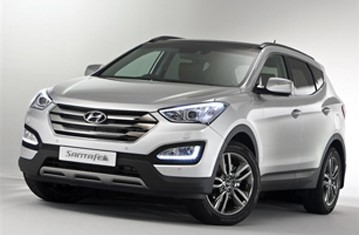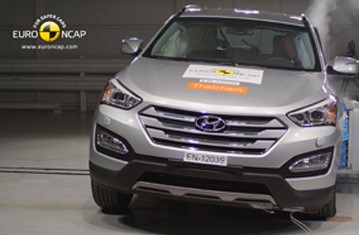Find more information in the General Comments section of the assessment
Find more information in the Rating Validity tab of the assessment
- See More
- See More
- See More
- See More
- Good
- Adequate
- Marginal
- Weak
- Poor
 Passenger
Passenger
 Driver
Driver
 Front Seat
Front Seat
 Car
Car
 Pole
Pole
- Good
- Adequate
- Marginal
- Weak
- Poor


Passenger
outboard
center
Fitted to the vehicle as standard
Not fitted to the test vehicle but available as option
Not Available
In the frontal impact, forward movement of the 3 year dummy, sat in a forward-facing restraint, was not excessive. In the side impact, both dummies were properly contained within the protective shells of their restraints, minimising the likelihood of dangerous head contacts with parts of the car's interior. The passenger airbag can be disabled to allow a rearward-facing restraint to be used in that seating position. Clear information is provided to the driver regarding the status of the airbag and the system was rewarded. Clear information is provided in the car about the dangers of using a rearward-facing restraint in that seat without first disabling the airbag.
- Good
- Adequate
- Marginal
- Weak
- Poor

Head Impact 18.6 Pts
Pelvis Impact 0.9 Pts
Leg Impact 6.0 Pts
The Santa Fe scored maximum points for the protection provided by the bumper to pedestrians' legs. However, the front edge of the bonnet was predominantly poor or marginal. The car has an active 'pop-up' bonnet. Sensors in the bumper detect when a pedestrian has been struck and the bonnet is lifted to provide additional clearance to hard structures beneath. Hyundai showed that the system worked over a range of speeds and for different pedestrian statures so the bonnet was tested in the deployed position. In those areas likely to be struck by a child's head, protection was almost all good. In those areas where an adult's head would strike, protection was good on the bonnet surface but was marginal or poor along the bottom edge of the windscreen.
- Good
- Adequate
- Marginal
- Weak
- Poor
| System Name | ESP | |
| Performance | ||
| Vehicle Yaw Rate @ COS + 1.00 s | 3.48% | meets ECE requirements |
| Vehicle Yaw Rate @ COS + 1.75 s | 1.38% | meets ECE requirements |
| Lateral Displacement @ BOS + 1.07 s | 3.1 m | meets ECE requirements |
| Applies To | Front seats | ||
| Warning | Driver Seat | Front Passenger(s) | Rear Passenger(s) |
| Visual | |||
| Audible | |||
|
|||
The Santa Fe has electronic stability control as standard and the system met Euro NCAP's test requirements. A seatbelt reminder is also standard for driver and front passenger seats but there is no system for the rear seats. The car's standard-fit driver-set speed limitation device met Euro NCAP's requirements.
- Specifications
- Safety Equipment
- Videos
- Rating Validity
Specifications
Tested Model Hyundai Santa Fe 2.2 diesel, 5 seat 'Comfort', LHD
Body Type - 5 door SUV
Year Of Publication 2012
Kerb Weight 1910kg
VIN From Which Rating Applies - applies to all Santa Fes of the specification tested
Class Large SUV
Safety Equipment
Note: Other equipment may be available on the vehicle but was not considered in the test year.
Fitted to the vehicle as standard
Fitted to the vehicle as option
Not fitted to the test vehicle but available as option
Not Available
Not Applicable
Videos
Rating Validity





Find more information in the General Comments section of the assessment
 Share
Share








The passenger compartment remained stable in the frontal impact. Dummy readings indicated good protection of the knees and femurs of both front seat occupants. Hyundai showed that a similar level of protection would be provided for occupants of different sizes and to those sat in different positions. In the side barrier test, the Santa Fe scored maximum points with good protection of all body regions. Even in the more severe side pole impact, protection of the chest was adequate while that of other body regions was good. The seat and head restraint provided marginal protection against whiplash injuries in the event of a rear-end collision.